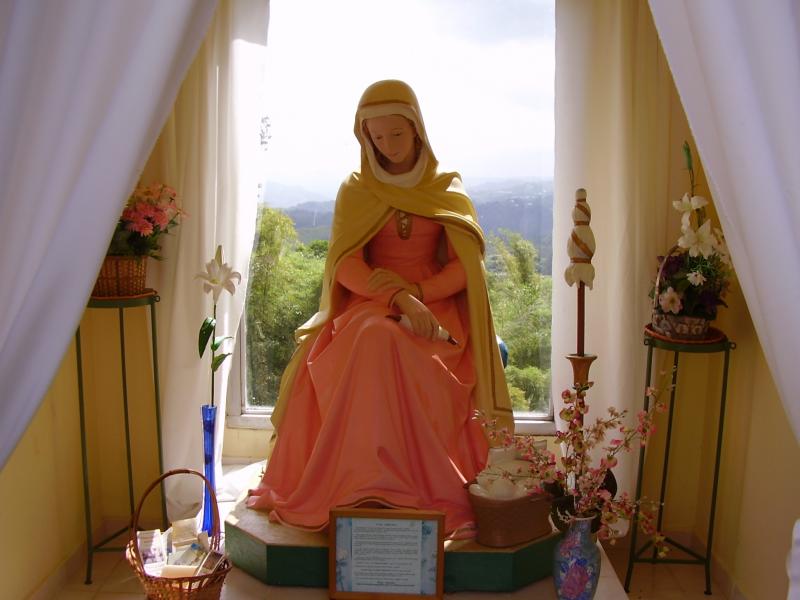Excerpt from “Purification” in Prayer in Faith, pp 56-58
In discussing the Feast of the Purification, Janet Stuart notes that this feast marks a transition between the Christmas season and Lent, a moment when we have in mind both the joy of the Incarnation and the “shadow of the Cross,” when the Mother of Jesus hears Simeon’s prophecy that a sword will pierce her heart.
Both the joy and the sorrow were real and true, and existed at the same time in the same soul. Costly joys and radiant sorrows, and between them, our Lady always calm, always strong, always so silent, keeping them in her heart, teaching us how to bear both, how there should be no illusions about our joys, and no giving way under our sorrows.
There are three things to be noted in the way in which she took them: She treasured them in her heart, ‘His Mother kept all these words in her heart.’ She did not for joy or sorrow change anything of the ordinary course of her life. She let them work their work in her soul. …
If we knew now all the lessons that God has taught us in moments of joy or sorrow by those particular waves of grace that accompany them, we should be well advanced in the spiritual life. But we forget, and forgetfulness of spiritual lessons learnt is one of our greatest drawbacks. We do not keep things and ponder them in our heart enough, either lights, or facts or warnings; we let them go. Why do we have to be so often taught and told the same thing by God or man, for instance, ‘that pride goeth before destruction’ and ‘the spirit is lifted up before a fall’; that God blesses obedience, and that self-will has no blessing, that sorrows blossom into joys, if we take them well—only because we do not ponder these things in our hearts as our Lady did.
We change too easily under joy or sorrow. They take us off our duty, we lose our balance in joy or give up the struggle and let ourselves go to sadness. Our Lady did not change anything in the course of her life and duties. We cannot imagine her sitting down with the Child in her arms to grieve over Simeon’s prophecy, or dream of His future greatness. She was at her duties with the same gentleness as if she had not the sword of sorrow in her heart. All the power of the joy and sorrow went out into doing the daily duty with entire submission to the Will of God. …
At the same time … she let the joys and sorrows change her. Through want of co-operation we receive priceless gifts which leave our souls unchanged. Every sorrow ought to fit us to bear more; every joy well accepted ought to widen our horizon, enrich our sympathy, tenderness, and forbearance. Our Lady let them work in her soul a work of grace of their own, and so they will for us if we let them.
Joys and sorrows are meant to exist in the same soul, they are meant to follow each other in regular succession. We should never attain sanctity if we had nothing but joy; God fixes the proportion of each that is best for each soul—thus joy is the herald of sorrow and sorrow of joy. They come like the seasons upon the ground. The winter has the promise of the spring, so sorrow the promise of joy. …
Let us ask our Lady to teach us how to make use of the sorrows and joys of life.

